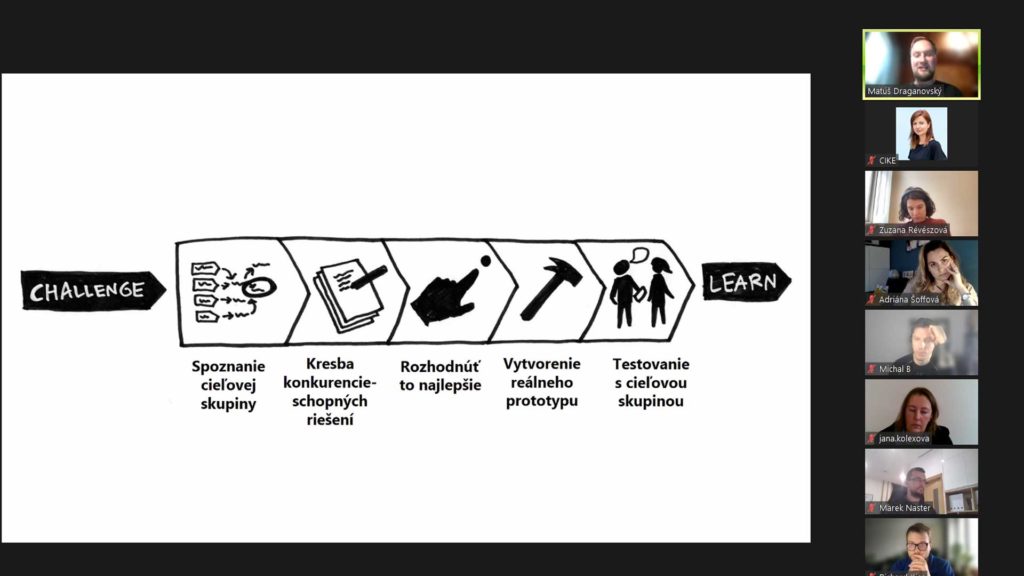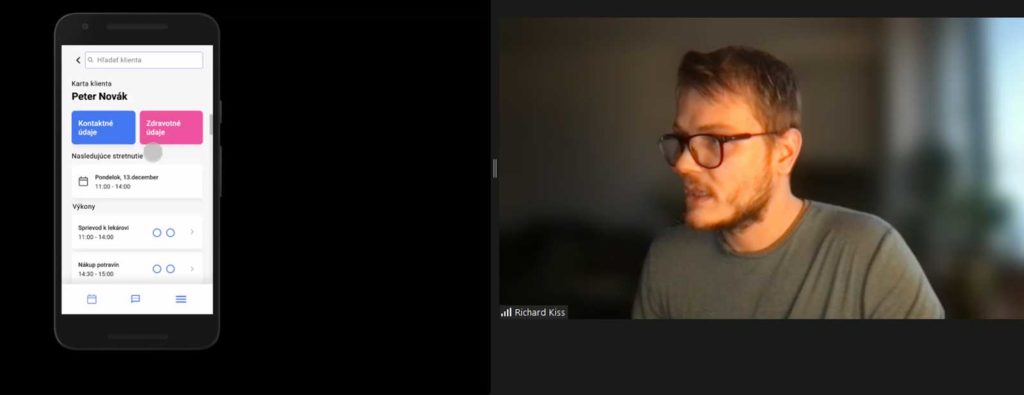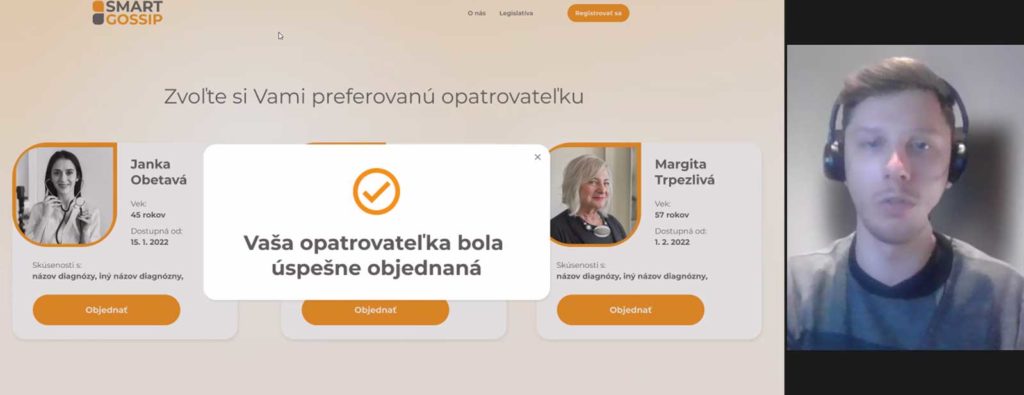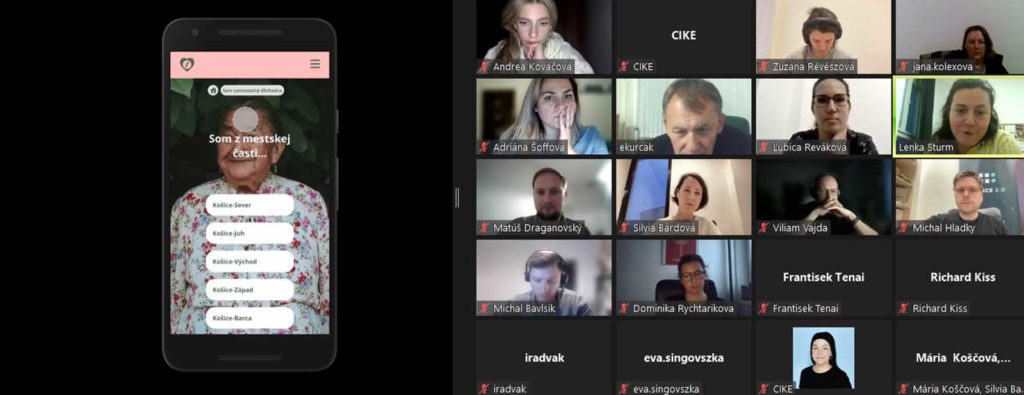We looked for ways to improve the city’s caregiving services
Creative people who care about living better in Košice gathered at a “design sprint” with a desire to learn something new, move out of their comfort zone, meet people from other professions, and test their own skills. All were experts in their fields – social services, IT, design, or research – and were willing to dedicate their time and energy to a common goal. The first design sprint turned out even better than expected.
In the view of Matúš Draganovský from SUVko Coaching, the advantage of a design sprint is that it gives participants a kind of superpower – the opportunity to see how their product, service, or process might look in the future. This can save time, energy, and money.
The first of a series of design sprints in the Košice 2.0 project was held online on the four December afternoons and was focused on the design of urban services, specifically field social services. This is a form of care provided to persons dependant on help provided in their home environment, which the city supplies through its boroughs.
The more diverse the team, the better the solution
Representatives from various fields met at the design sprint. The idea was to “mix” the skills and knowledge of the teams so that the aim of the sprint was met. The participants were workers from the service environment – clerks, coordinators, and employees of related departments of the city council – but also experts with various professional focuses – IT, digital technologies, design, sociology, data analysis, and user research.
An ever more popular method of creative work has also taken root in Slovakia, particularly in multinational companies, and some of the participants even already had experience with it. “Sprints are a regular part of our work process,” says Richard of GlobalLogic, who wanted to get a better overview of the topic of social services and also meet people with similar motivations. Eva is a data analyst and she was taking part in a design sprint for the first time. “I learned to work with the new program, and I was stunned in how short a time it was possible to create a prototype. We were a great team, and I’m pleased with the contacts I made.”

12 hours – three prototypes
A design sprint usually lasts for three to five full days. “In our case, we can say that we really did sprint, as we had only 12 hours available over four days”, explains Matúš. On the first day, participants were introduced to the challenge and looked over what kinds of behaviour and needs the target groups had – the problems that service personnel face in their work.
The next step in the process was empathizing with the users of the service and its personnel, which was led by facilitator Matúš Jarečný. The participants created personas and had to decide which needs and wishes to focus on. Then in the idea phase, teams came up with various ideas and tried to choose the best one. Thanks to the participation of the so-called deciders – representatives of the city and the city’s boroughs – they could fall back on real practice. The deciders took part in the process at selected moments, when it was necessary to give participants feedback, decide on the potential or feasibility of ideas, and shift the teams forward. The fine-tuning and solution presentations were on the agenda for the final day. “For me, the result was three exceptional prototypes focused on how to improve the communication and interconnection of care services and clients, but also how to help you find your way around the service,” adds Draganovský.



Design sprint brought new perspectives and cooperation
What will happen to the prototypes now? The answer comes from Silvia Bárdová, who is responsible for preparing the Košice 2.0 sprint project: “The prototypes will be offered to the city for further development and implementation.” In the next period, the possibilities for making use of the amount of work that the participants put into the sprint will be sought and how to bring their proposals into real life, because this is why it was created. She considers the use of a designer’s approach in urban services to be a very positive precedent. “I’m convinced that letting teams with diverse skills and perspectives work is the best way to solve complicated problems. We thank everyone who took part, including the city representatives, and I’m already looking forward to further meaningful joint activities,” Bárdová adds.
People with a sincere desire to help met at the design sprint. They communicated and even worked on the challenge beyond the hours when the sprint took place. Several participants also offered the city help in further work on the prototypes and potential implementation of the resulting solutions. What motivated them to do that? On the one hand, a willingness, enthusiasm, belonging, and desire to selflessly help and contribute with your abilities to something “bigger”. On the other hand, they were aware that there are matters that concern all the inhabitants of the city. And we thank them for that!

